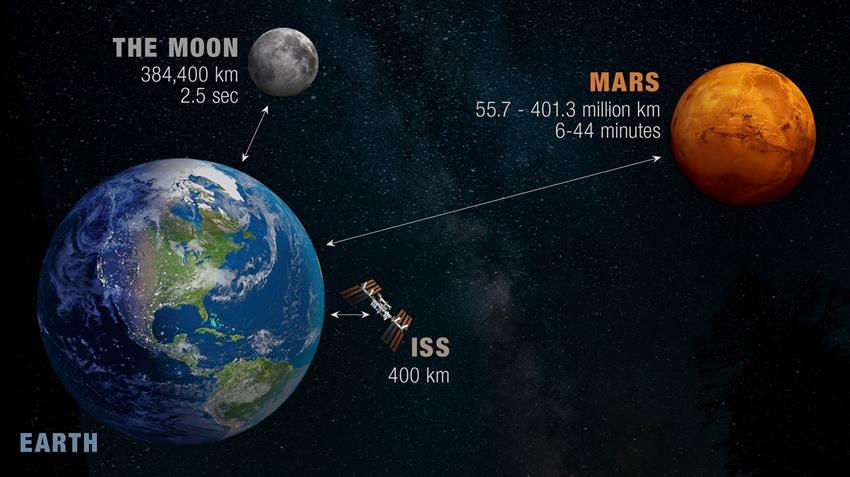Why the Moon?
American astronauts orbited and landed on the Moon over 50 years ago. So why are we going back?
Since , the American, Canadian, European, Japanese and Russian space agencies have learned how to live and work in space aboard the ISS. But while we may think that the ISS is located very far from Earth, it orbits a mere 400 km above our planet. It's roughly the driving distance between:
- Vancouver and Kelowna
- Toronto and Ottawa
- Fredericton and Halifax
Now don't get us wrong! While the distance isn't that great, the challenges are countless. And we have learned a lot from our time on the ISS about how the body works and adapts to microgravity; how to live and work efficiently in space; how to grow food, perform science and provide medical care; how to maintain good physical and mental health; and so much more!
Exploring beyond the ISS
Countries from around the world are getting ready to send humans farther into our solar system, beyond the ISS. Nearly 400,000 km away from our planet, the Moon represents a crucial stepping stone in our quest to travel a million times further, onwards to Mars.
Greater distances mean long-duration missions. They also mean bigger health risks for humans living without Earth's protective atmosphere and longer communication delays.
In other words, crews and missions travelling farther from Earth will require more independence and autonomy.
The Canadian Space Agency is preparing for future missions by advancing technologies in areas of strength for Canada, like artificial intelligence, robotics and medical healthcare technologies.
Comparative table – ISS, Moon and Mars
| ISS | Moon | Mars | |
|---|---|---|---|
| Distance from Earth | 400 km | Close to 400,000 km |
|
| Communications delay (one way) | Less than 1 second | 2.4 to 2.7 seconds, with an average of 2.56 seconds | 6 to 44 minutes depending on where Mars is located |
| Time to get there | 6 hours to 3 days | 3 days | 9 months; launch is only possible approximately every two years due to the different orbits of Earth and Mars |
| Duration of a mission | 6 months on average |
|
21 months (3 months on Mars) |
| Time to get back to Earth | 3 hours | 3 days | 9 months |
There are many other reasons to go back to the Moon before travelling to Mars. Here are a few:
- The Moon will provide a proving ground to test technologies and resources that will take humans to Mars, including building a sustainable, reusable architecture.
- With its partners, NASA will use Gateway as a base for astronauts to explore more parts of the lunar surface than ever before.
- Only six Apollo missions made it to the lunar surface between and , and a total of 12 men have walked on the Moon. All of the men were American. The Artemis missions will bring the first woman and the first person of colour to the Moon as well as people from other nations such as Canada.
- Rovers are essential to exploration. However, they haven't travelled as far as the astronauts who drove the Moon buggies on the Moon. It might be more expensive to get people to the Moon, but they will get a lot more done in a shorter timeframe.
- The Moon is like a museum of the history of the solar system. Apollo astronauts collected over 2000 samples, 382 kilograms of rocks over four years. A portion of those samples has been used for science and teaching purposes. Scientists have learned a lot, but there is so much more to discover! New missions to the Moon will help push our knowledge of the geology of the Moon and Earth as well as the history of the solar system.
- This new chapter of exploration will generate many commercial spinoffs for the benefit of people on Earth and tons of exciting new jobs – some of which don't even exist yet!
- And most of all, the exploration of the Moon will inspire the next generation of scientists, engineers and astronauts.

The exploration of the Moon will inspire the next generation of scientists, engineers and astronauts.
Why do you think we should go back to the Moon? If you could travel there, what would you explore?
Check out NASA's "Why the Moon" video to learn more.

